1957 Moto Morini 175GT Gearbox Disassembly
This page is mainly a survey of the main components and some commentary on how it comes apart and how I think it is supposed to work. There will be a separate page on re-assembly soon.
Obviously, in order to access the gearbox you will need to split the cases. On the left side of the engine you’ll need to remove the clutch assembly at a minimum (noting once more yet again that the nut holding the clutch hub is a LEFT HAND THREAD). Everything under the right side cover needs to come off, as described on a separate page. When I removed the drive chain, countershaft sprocket and the cover for the countershaft bearing I found a good reason (if I needed one) to split the cases:
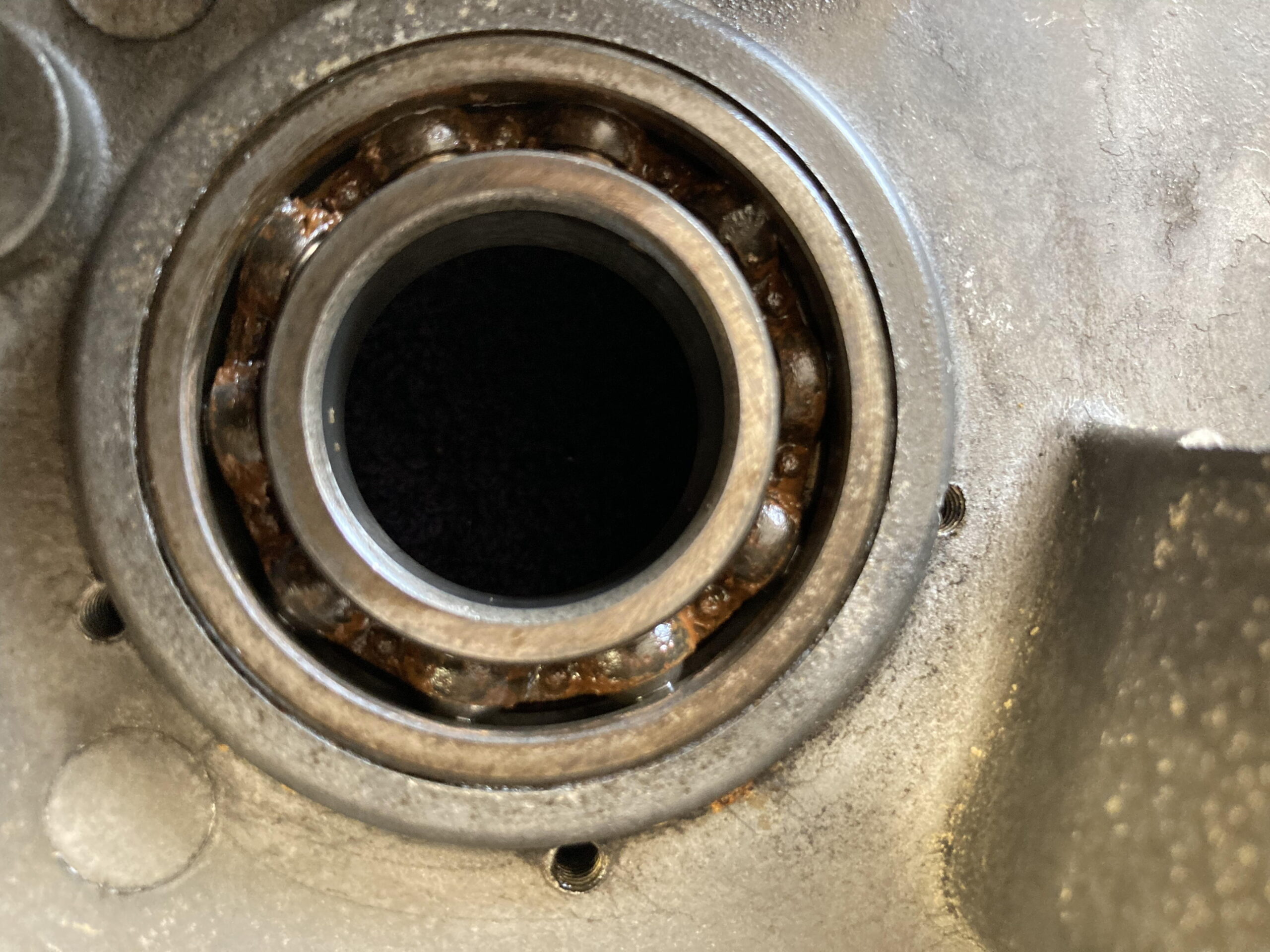
Moisture has gotten past the grommet that seals off the clutch rod and rusted the bearing. It turns, but it was nasty. Hopefully the water has not gotten any further into the engine.
When you split the cases, lift the right side engine case (dynamo side) away, leaving the gear cluster in the left side engine case.
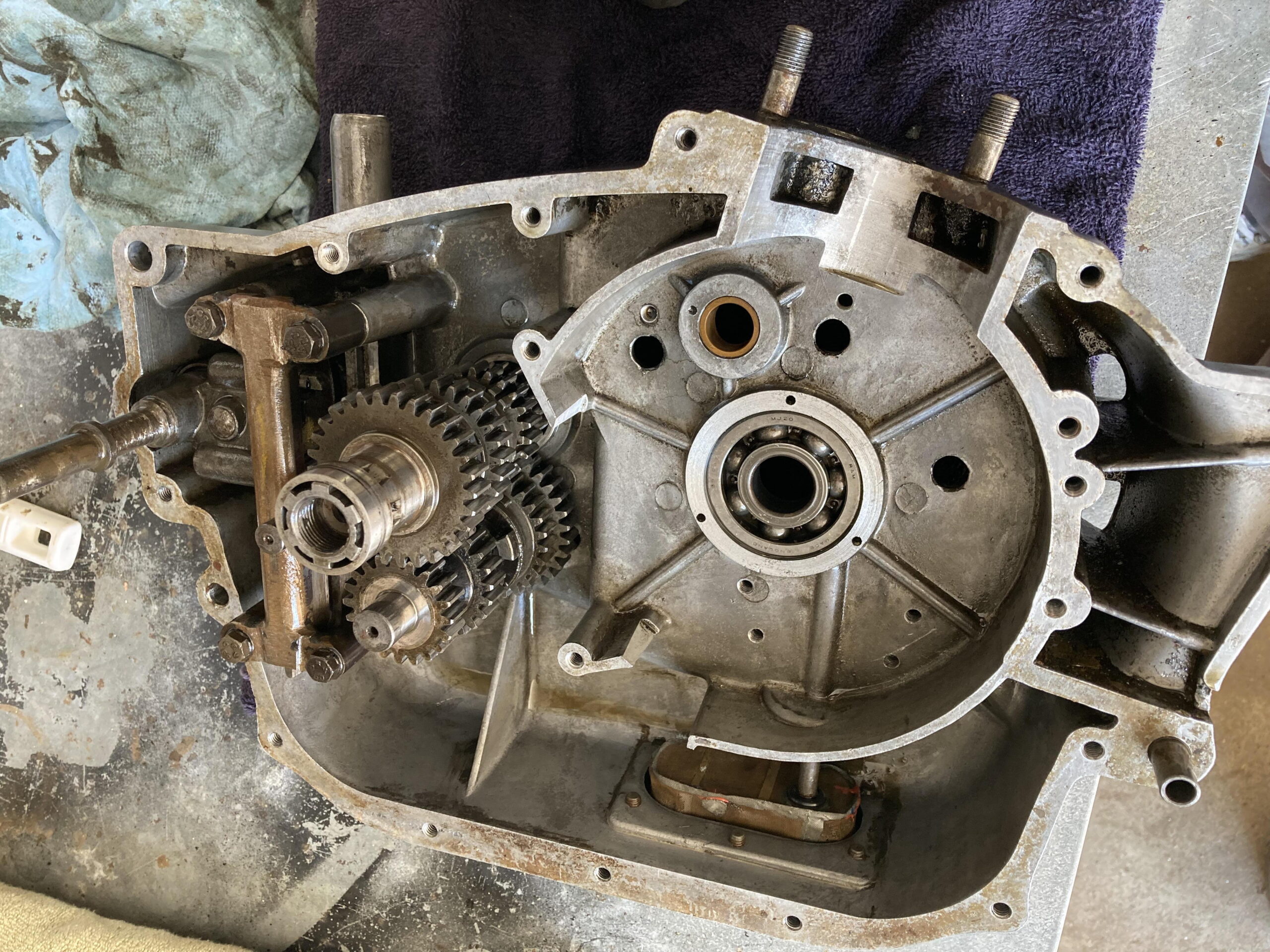
With some fiddling you can remove the gear cluster with selector forks right away. Put the gearbox in neutral. Pull the shaft on which the shift forks slide from its bushing in the case. Remove the two top gears (“top” means farthest from the primary side case half) from the mainshaft (upper one), the mainshaft shifter fork comes along with its gear. Then you can pull the remainder of the mainshaft and its gears. You might need to tap the end of the mainshaft from the clutch side to free it from its bearing in the engine case. Then the layshaft with its top two bearings can be pulled out, leaving the two lower gears (one with a shift fork) free.
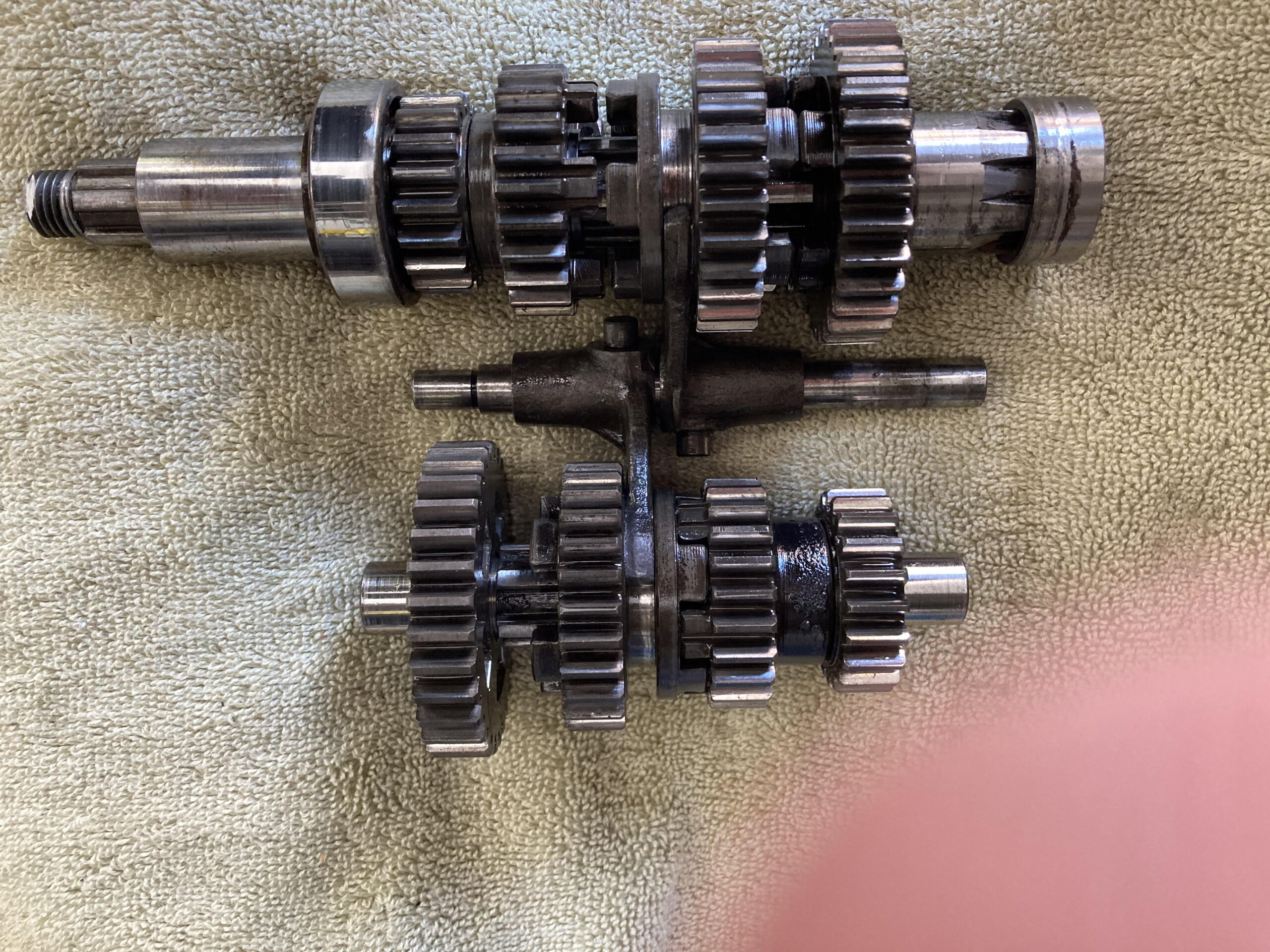
Notice the orientation of the two sliding gears to which the shift forks attach. They can be reversed but you won’t get the gearbox back together! The orientation of the shifter forks in this photo is wonky because I didn’t pay enough attention to how I laid it out. The two pins are parallel when installed. As far as I can tell the two shift forks are identical but it’ll be best if you can retain their original gearshaft.
The shift selector mechanism is based on a sliding plate with two very different sides. When you remove the upper plate guide, note the orientation. It may only go back cleanly in the same orientation.
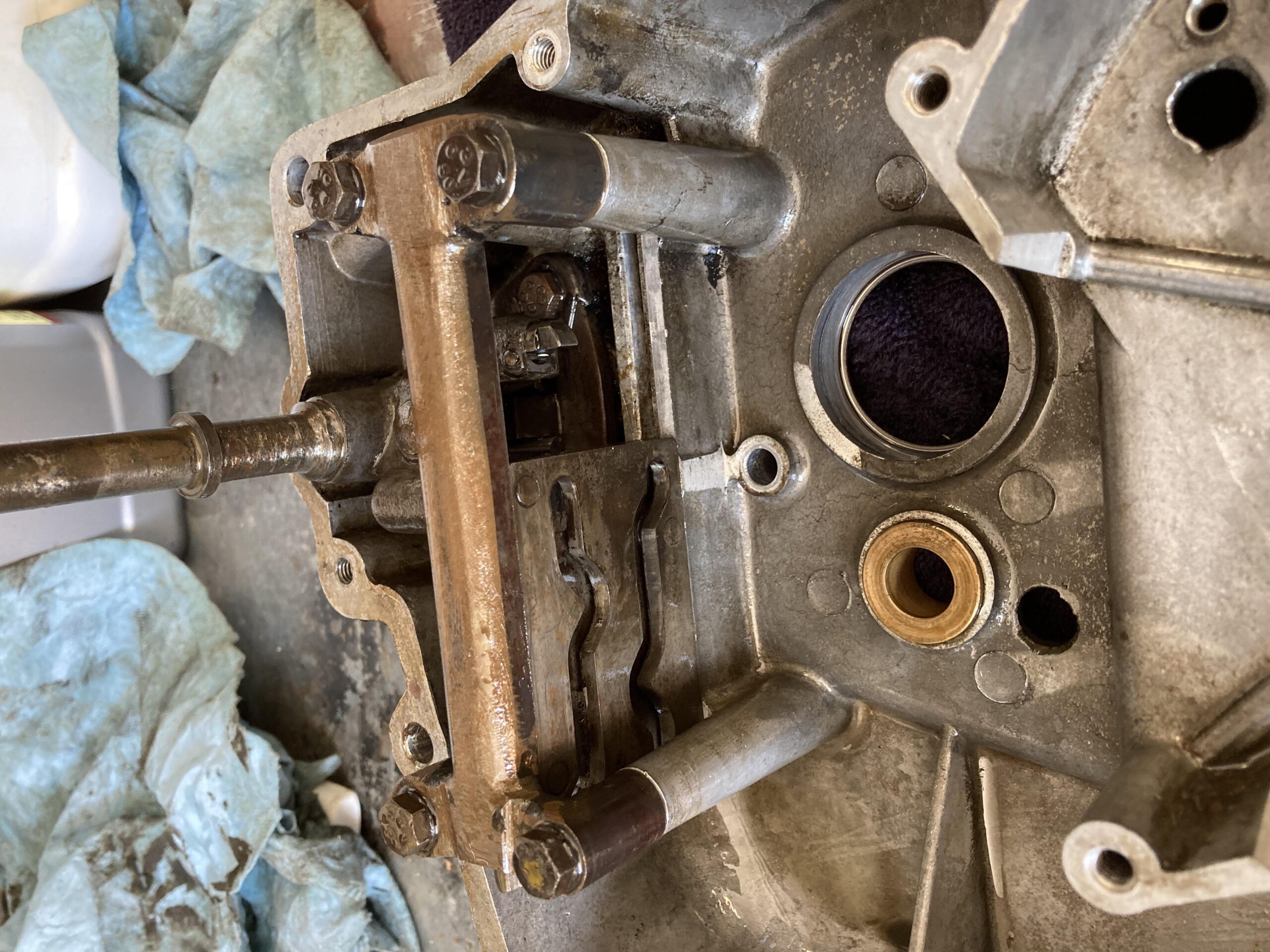
The side facing the gear cluster has tracks for the pins on the shift forks. The upper track is for the mainshaft, lower one for the layshaft. Each track has three positions.
- Neutral: both pegs in middle position
- First: layshaft peg in lower position, mainshaft peg in middle position
- Second: layshaft peg in middle position, mainshaft peg in lower position
- Third: layshaft peg in upper position, mainshaft peg in middle position
- Fourth: layshaft in middle position, mainshaft in upper position
The bottom of the plate has detents for each gear position and there is a spring-loaded pin in the lower plate guide for positive engagement. From left to right the detents are 4th, 3rd, 2nd, neutral and 1st gear.
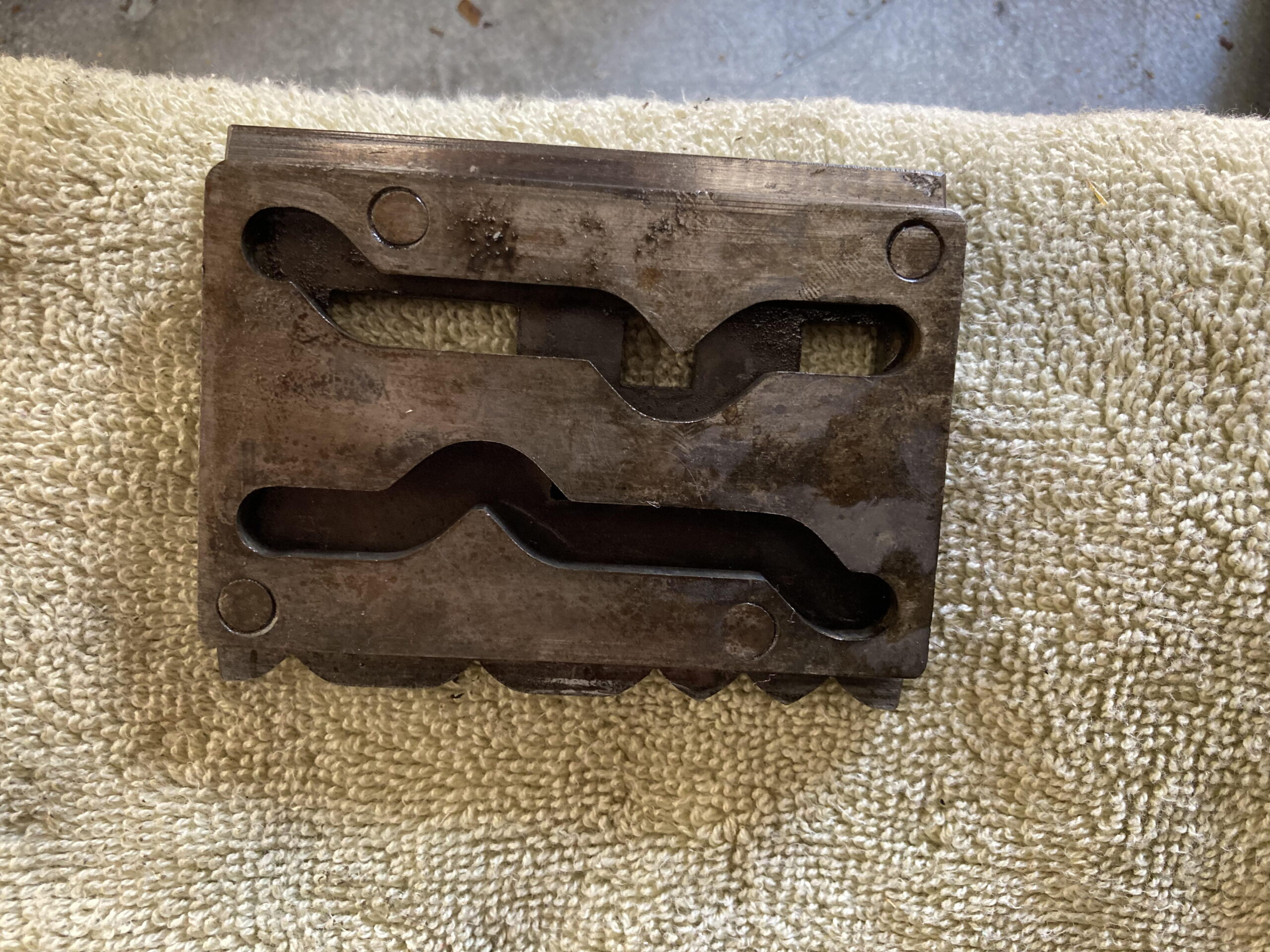
The other side has two rows of complex ramps and sharp shoulders. The upper row is for up-shifts, lower row for down-shifts.
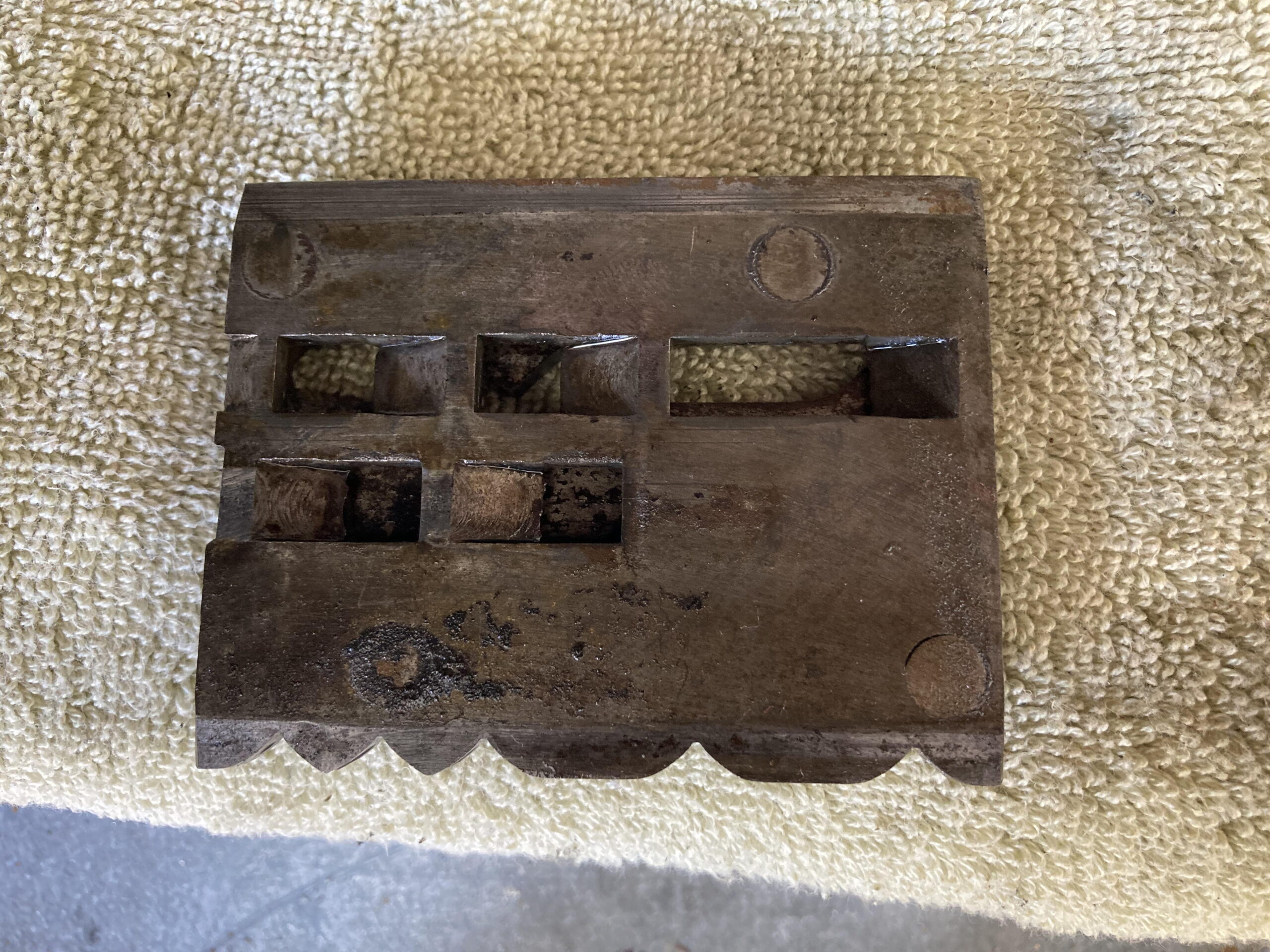
The shift shaft rotates a head with two arms, each holding a spring-loaded retracting pin with a beveled tip.
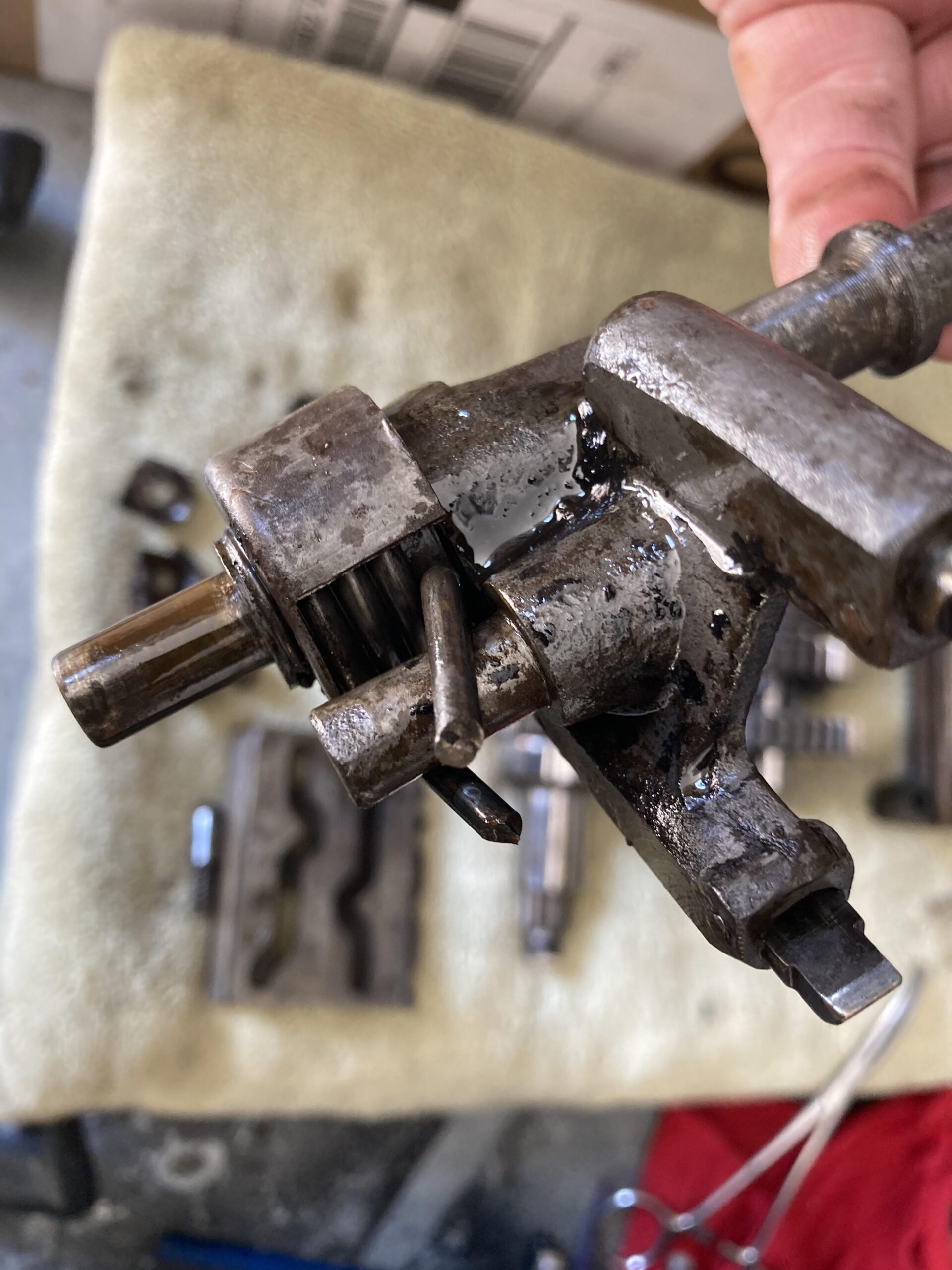
This plate limits the amount of rotation of the shift shaft, notice the unusual caps for the two bolts. One corner is bent up to lock the bolt.
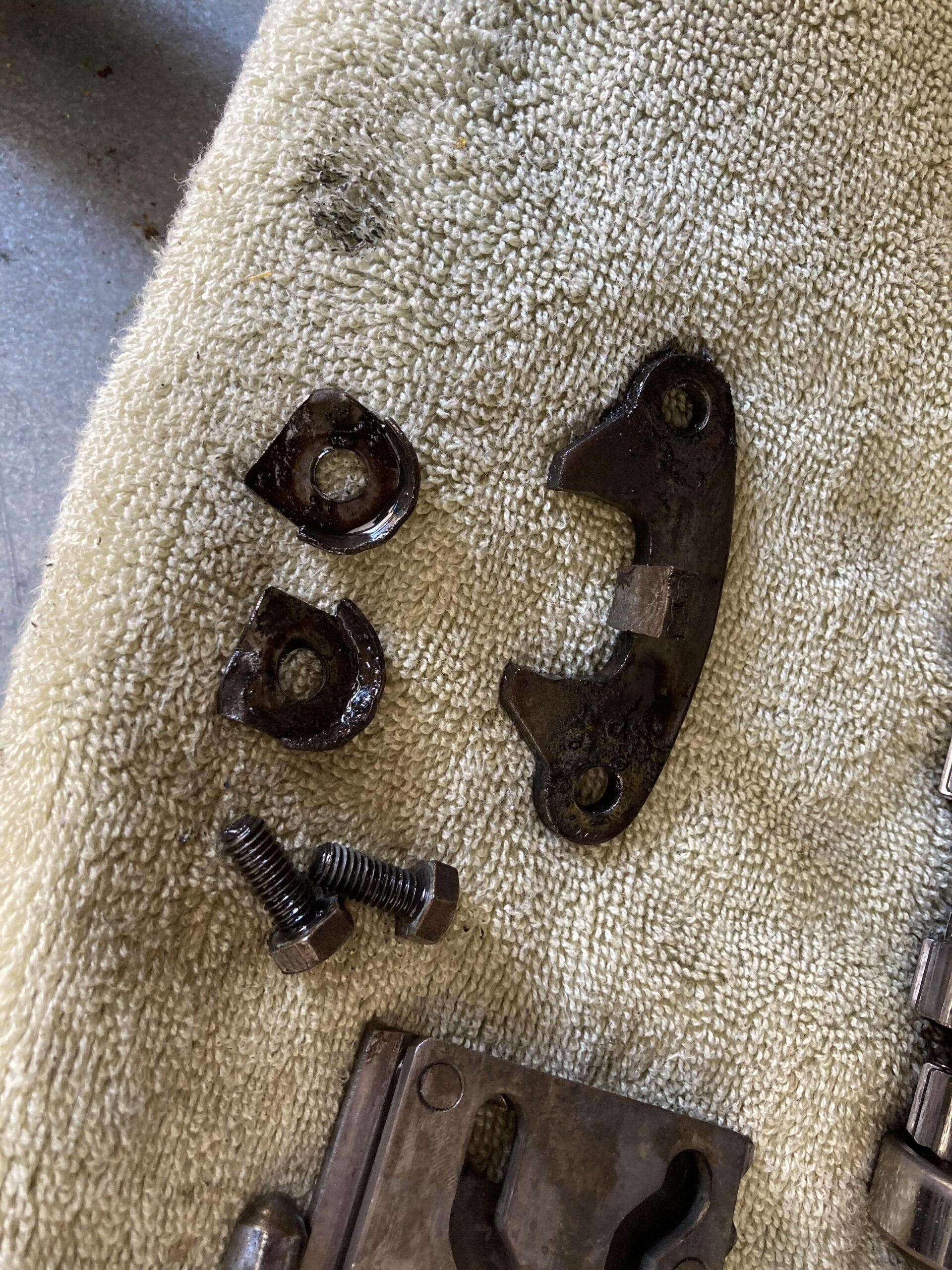
The arms of the shift head are angled so one engages each track. The upper (away from the engine case) pin handles up-shifts, the lower one handles down-shifts. The spring-loaded pins allow the tips to slide cleanly up the ramps when that pin is not active. When the sharp face of a pin engages a sharp shoulder in the selector plate it forces the plate to slide. With the engine in the frame the plate moves down for down-shifts.
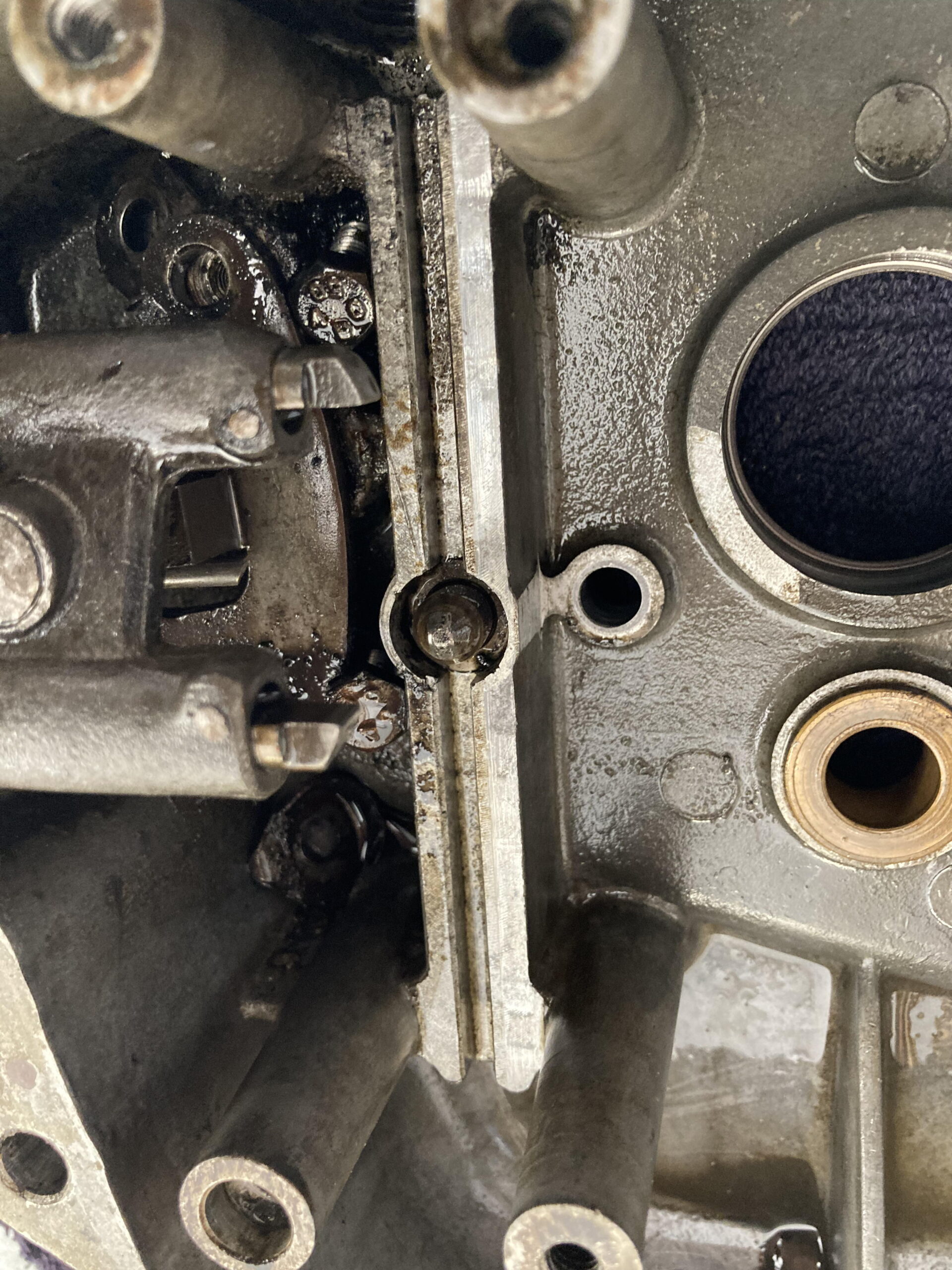
When everything is removed, after an initial wash.
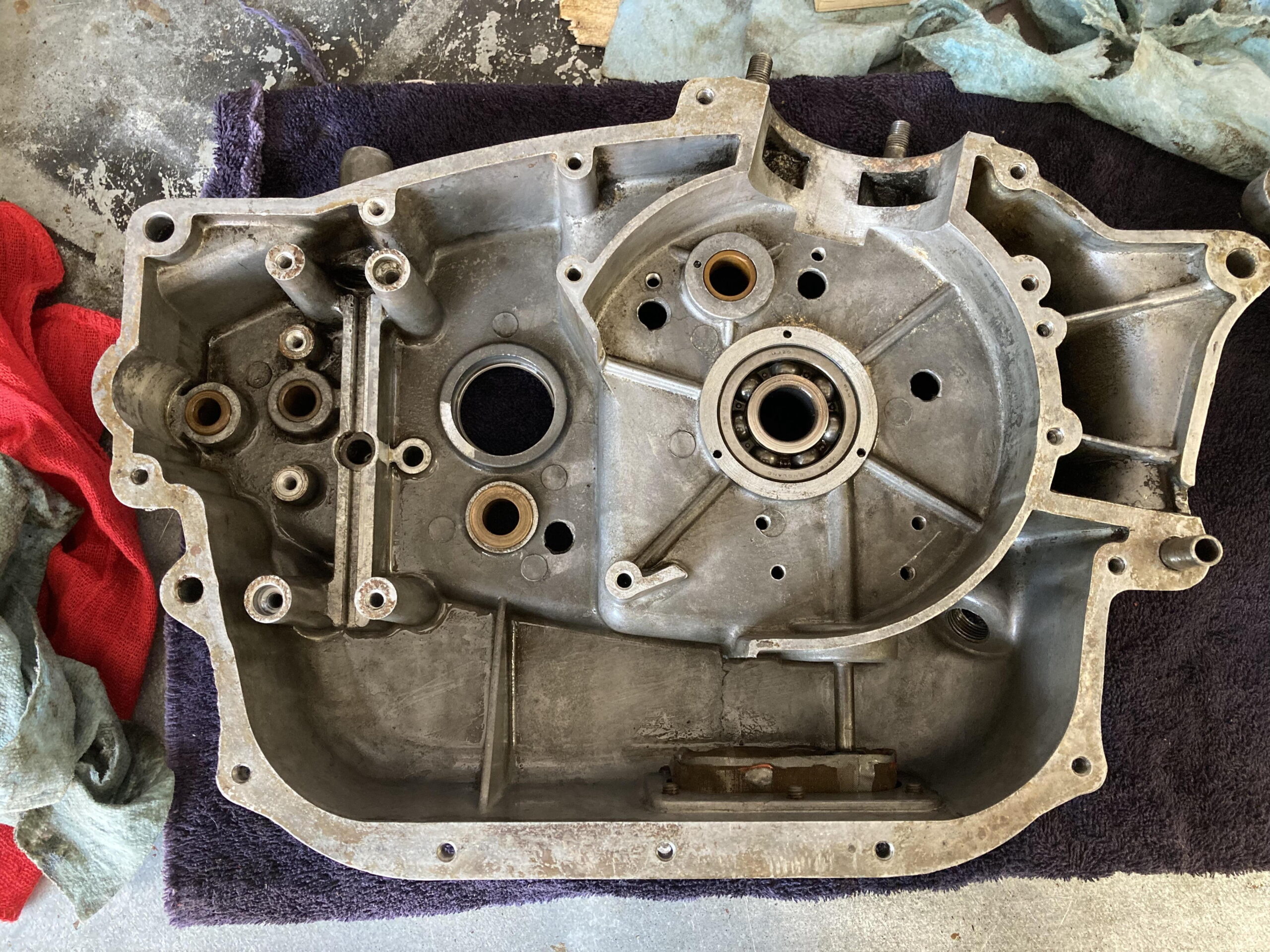
I was happy to find that the water damage to the countershaft sprocket had not penetrated any further into the engine. I didn’t find anything amiss in the gear clusters and shift selection mechanism, just some typical wear and a lot of sludge. The bearing in the left engine case for the mainshaft seemed to be in good condition but I decided to replace all ball bearings as a matter of course.
